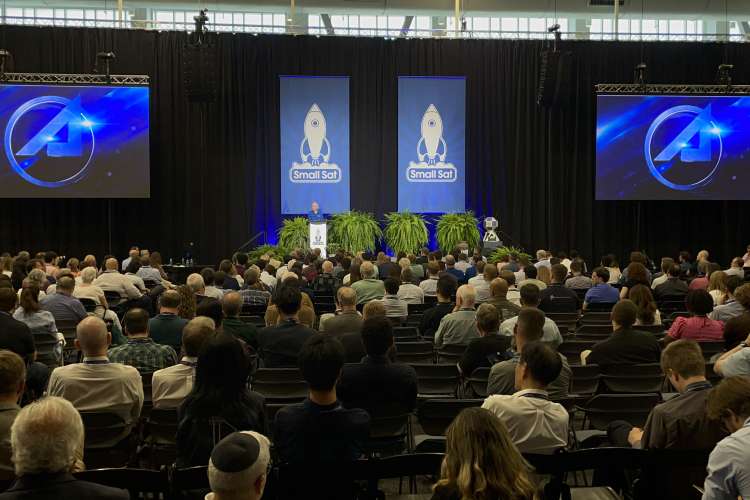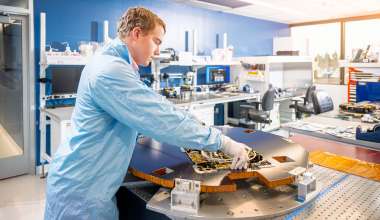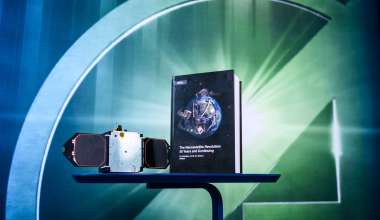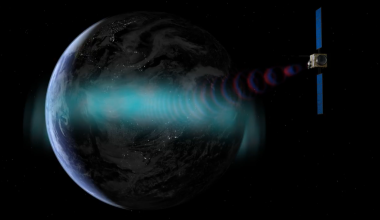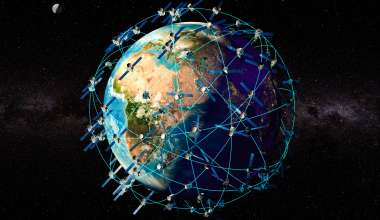The pace of innovation rapidly transforming the space industry has been remarkable, and there is perhaps no better example than the field of small satellites of how creative energy, diversity of ideas and brilliant engineering can converge to push boundaries. From humble beginnings, the advancements in smallsat capabilities continue to expand imaginative possibilities for the future of space.
At the 2024 Small Satellite Conference, The Aerospace Corporation engaged with the broader smallsat community to explore the latest innovations, concepts and capabilities in the field. This year's event highlighted how automation is being integrated into smallsat systems across the space, launch, ground, and user segments, making them smarter and more effective.
“We are so fortunate to be able to attend the SmallSat Conference here,” said Steve Isakowitz, President and CEO of Aerospace. “It's a place that started 40 years ago with a few dozen people and has grown to nearly 4,000 people. It brings together people from the community that are talking about some of the latest, most exciting technologies in small satellites, and the increasingly important role that it's playing in the future. Aerospace has been there from the beginning, and I'm so proud of our presence here.”
Isakowitz was a keynote speaker at this year event, exploring the evolution of smallsat technologies and their significant impact on the broader space industry today. He also highlighted some of the bold concepts and prototypes—leveraging new enabling technologies and developments like growth in computing power and launch vehicles—that could shape the architectures of tomorrow.
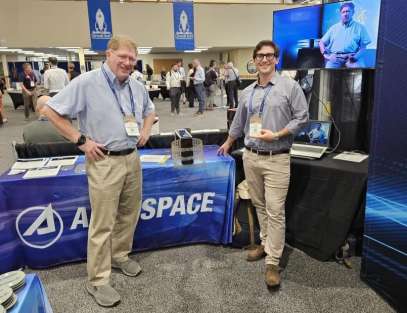
“I do believe the smallsat revolution is here to stay, from those early hungry days, it is shaking up the industry for real change,” Isakowitz said during his keynote. “Everybody needs to get on board with taking advantage of the kind of entrepreneurship, innovation and risk-taking that we’re seeing out of it. I think it’s imperative that we have the kind of future with swarms of these smallsat technologies.”
Aerospace experts had the opportunity to share some of their novel projects with the community, such as DiskSat, Deorbit Motor and Autodynamic Flexible Circuit. They also engaged in meaningful discussions on topics such as automation, rendezvous and proximity operations, and adapting mission assurance. These contributions not only drive innovation forward, but also advance solutions for some of space’s hardest problems.
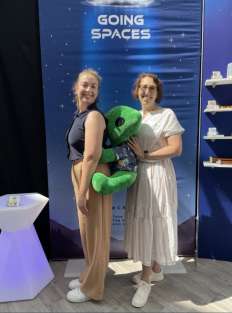
“It used to be the case that you could put a satellite up and and let it take many years for the orbit to slowly decay or to reenter,” said Jerry Fuller, Senior Engineer Specialist at Aerospace. “It's not the case anymore. There's so much stuff in space now that we need to be actively bringing things down.”
Aerospace pioneered some of the first small spacecraft in orbit and were integrally involved in developing and promoting the CubeSat standard, and continues to forge new innovative approaches today.
“SmallSat has a special place for a lot of us in Aerospace. A lot of us have been building and flying CubeSats for a very long time, so being a part of the community is really special to us,” said Catherine Venturini, Principal Engineer and Scientist at Aerospace. “SmallSat is also a great opportunity for us to engage with vendors, customers, academia, and everyone else interested in the smallsat community and smallsat missions.”
